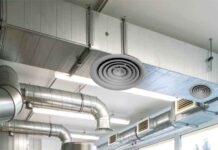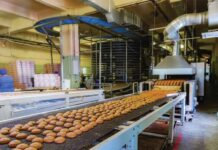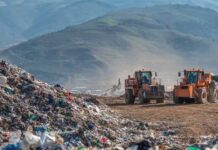
Indoor air quality (IAQ) is one of many factors that determine building functionality and economics. A building with good IAQ is more desirable place to work, learn and conduct business, as it affects building occupants and their ability to conduct their activities and creates positive or negative impressions on them. IAQ directly affects occupant health, comfort and productivity. Serious health impacts resulting from poor IAQ include – Legionnaires’ disease, lung cancer from radon exposure, and carbon monoxide (CO) poisoning.
More widespread health impacts include increased allergy and asthma from exposure to indoor pollutants, molds and other infectious diseases that are transmitted through the air, and sick building syndrome symptoms due to elevated indoor pollutant levels as well as other indoor environmental conditions. These more widespread impacts have the potential to affect large number of building occupants and are associated with significant costs due to healthcare expenses, sick leave, and lost productivity.
Photo Catalytic Oxidation (PCO)
Photo Catalytic Oxidation (PCO) is an advanced process by which volatile organic compounds (VOCs), bacteria, mold and fungus is destroyed by incorporating photon and ultraviolet (UV) energy activating a catalyst thereby, creating photo catalytic oxidation (PCO).
What is UV
The electromagnetic spectrum
- UV-A: The most abundant in sunlight; responsible for skin tanning and wrinkles
- UV-B: Primarily responsible for skin reddening and skin cancer; also used for medical treatments
- UV-C: Naturally blocked by the earth’s ozone layer and is the germicidal wavelength.

How Photo Catalytic Oxidation (PCO) works
PCO is achieved when you combine UV light rays with a TiO2 coated filter or surface. TiO2 refers to Titanium di-oxide. This process creates hydroxyl radicals and super-oxide ions, which are highly reactive electrons.
These highly reactive electrons aggressively combine with other elements in the air, such as bacteria and Volatile Organic Compounds (VOCs). VOCs include harmful pollutants such as formaldehyde, ammonia and many other common contaminants released by building materials and household cleaners.
Once bound together, the chemical reaction takes place between the super-charged ion and the pollutant, effectively ‘oxidising’ (or burning) the pollutant. This breaks the pollutant down into harmless carbon dioxide and water molecules, making the air more purified.

Air Purification with PCO and Gas Phase Filtration
UVPCO often utilises a honeycomb configured, reactor coated with titanium dioxide (TiO2 or titania) as the photo-oxidative catalyst. This design potentially can have high conversion rates with low pressure drop making it suitable for use in building HVAC systems.
The coated screen is irradiated with UV light near 254 nm UVC. Air containing organic pollutants flows through the screen where the VOCs adsorb on the catalyst. The UV light interacting with the catalyst in the presence of oxygen and water vapour, produces hydroxyl radicals. Hydroxyl radicals are highly chemically reactive and, in-turn, breakdown the adsorbed VOCs, ideally producing only carbon dioxide and water as bye products.

Gas Phase Filtration with photo catalyst oxidation systems are tailored precisely to project needs and operate with the highest efficiency. The multi-stage design allows for selection of the required filters in a specific sequence to meet the requirements of each application as described in following sequence:
Stage 1: Pre-filtration
Air entering the system passes first through particulate filter which captures many of the larger biological contaminants and small airborne particle. This also protects the UVPCO stage.
Stage 2: Photocatalytic Oxidation (PCO)
Combining UV light rays with a Titanium di-oxide coated filter or surface creates photocatalytic oxidation. This process creates hydroxyl radicals and super-oxide ions, which are highly reactive electrons. This breaks the pollutant down into harmless carbon dioxide and water molecules, making the air more purified.
Stage 3: Gas Phase Filtration
The blend of carbon and KMnO4 on alumina filled in media cassettes in right proportion removes the odours and VOCs. Any intermediate products of PCO section are captured by carbon and converted to CO2 and water vapour. In this section, regeneration of activated carbon also takes place enhancing its active life as shown in figure 3.
Stage 4: Catalyst filter
This is an additional stage which safeguards against any media dust that may cross the previous stages.
Stage 5: Automation
This stage provides necessary power to PCO section and switch off UV lamps when doors are open. Sensing, monitoring and BMS connectivity is also provided through this section.
A rightly designed system with adequate controls and safety can provide following benefits:
- Elimination of molds, viruses, bacteria and allergens etc.
- Maintaining desired levels of particulate matter
- Efficient regeneration of media
- No harmful emissions
- Reduction of all odorous and hazardous air pollutants
- Very high single-pass efficiency of gas removal
- Prevention of corrosion or breakdown of electronic equipment.









